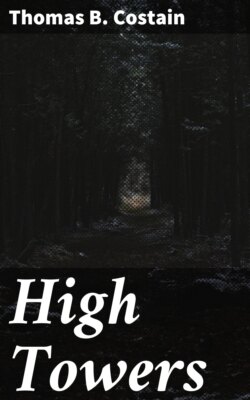Читать книгу High Towers - Thomas B. Costain - Страница 3
На сайте Литреса книга снята с продажи.
INTRODUCTION
ОглавлениеTable of Contents
uy Frégault, whose biography of Pierre le Moyne d’Iberville is the most reliable and the only definitive book about that fantastic fighting man and leader, says that nothing exists on which even a physical description of him can be based. There is an equal lack of personal detail with reference to the other nine Le Moyne brothers who as a group have been called the Canadian Maccabees. They are shadowy figures, these French-Canadian heroes. They achieved remarkable things under extraordinary circumstances, the most notable being the conquest of Hudson’s Bay and the discovery and settlement of Louisiana. The hint of a great conception can be sensed in the things they did, nothing less than the mastery of a continent. Apart from this we know when they were born, when they married and when they died. They were raised in Montreal and on their father’s seigneurie across the river at Longueuil. Charles, the eldest, succeeded his father and built at Longueuil a great château with four high towers, at the same time amassing what in those days was a considerable fortune. Jean-Baptiste, the eighth brother, was governor of Louisiana for thirty years and the founder of New Orleans. Joseph became governor of Rochefort and Antoine of French Guiana. All of the other brothers, including the great colonial paladin Pierre, died in the service of France.
Beyond this brief record of their achievements and the vital statistics in the archives at Montreal, what is known of the ten stout brothers? What manner of men were they? Were they typical of the French-Canadian people of this early period, brave, resolute, devout, lighthearted? The only due to them as human beings is an occasional revealing reference in the scanty annals of the day, such as an early indiscretion of D’Iberville’s and the fact that the Iroquois called Paul le Moyne Little-Bird-Always-in-Motion. To deal with them as characters in a novel, therefore, is a task approaching that of the scientist who tries to reconstruct a monster of prehistoric times with nothing more to go on than a broken rib and a fragment of jawbone. The result is certain to raise doubts in the minds of historians who are skeptical necessarily of anything stemming from the imagination. In my opinion, nevertheless, the only way to tell the saga of the Le Moynes, and to attempt the rescue of these remarkable brothers from the oblivion into which they have sunk, is to set down their story in the guise of historical fiction. There are too many gaps in the record for successful factual treatment. Any apologies that I have to offer are not for attempting the task on this basis but for my shortcomings in carrying it out.
When real characters are involved in a story it is often necessary to surround them with creatures of the imagination in order to create a personalized background. Only the members of the family and a few figures of official standing are real in High Towers. Félicité and her mother, Philippe, Joseph de Mariat and Auguste of that ilk, the settlers and servants at Longueuil, the minor citizens of Montreal, the people of New Orleans where the story reaches its climax—none of these ever existed. It follows that the events in which they figure have no basis in fact, except that the lives of the Le Moyne brothers, and those about them, must have followed some such course.
I desire to extend my warmest thanks to the many who assisted me in gathering the necessary material. Help was extended in many quarters, in Montreal, Longueuil, Quebec, Paris, New York, New Orleans, Annapolis. I realize that, without the aid thus generously supplied, it would have been impossible to give anything in the nature of a rounded picture of the lives and times of this truly fabulous family.
Thomas B. Costain
